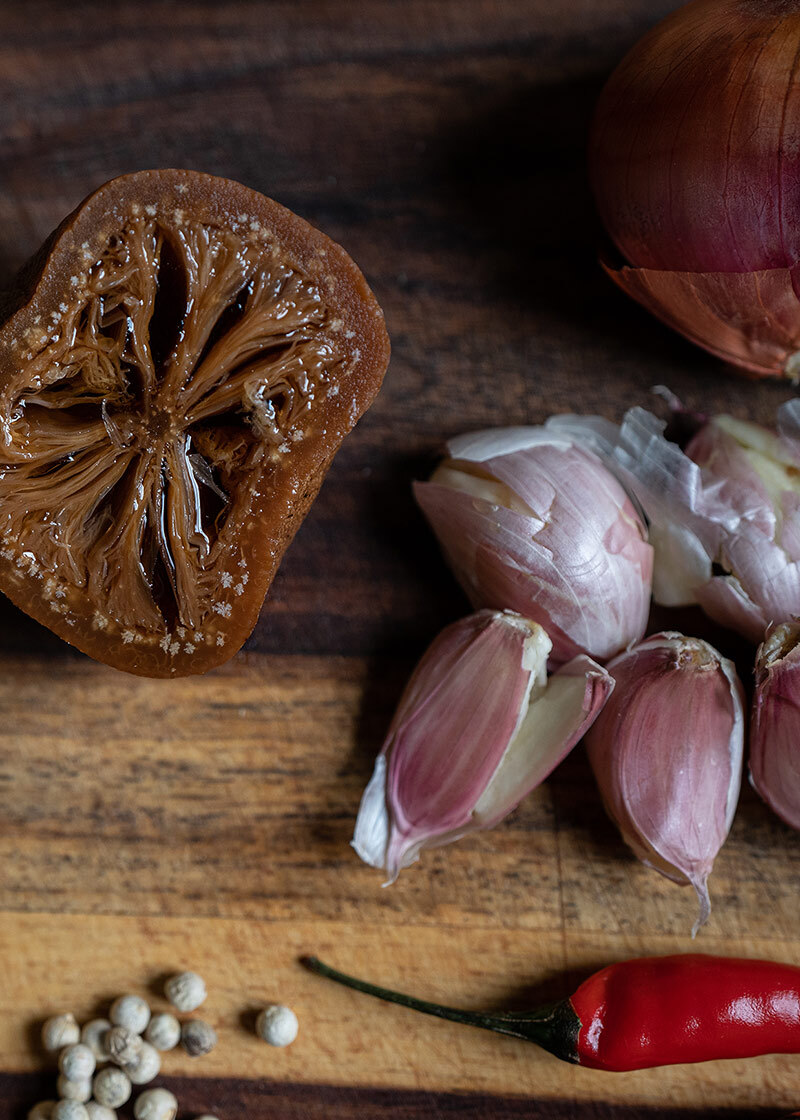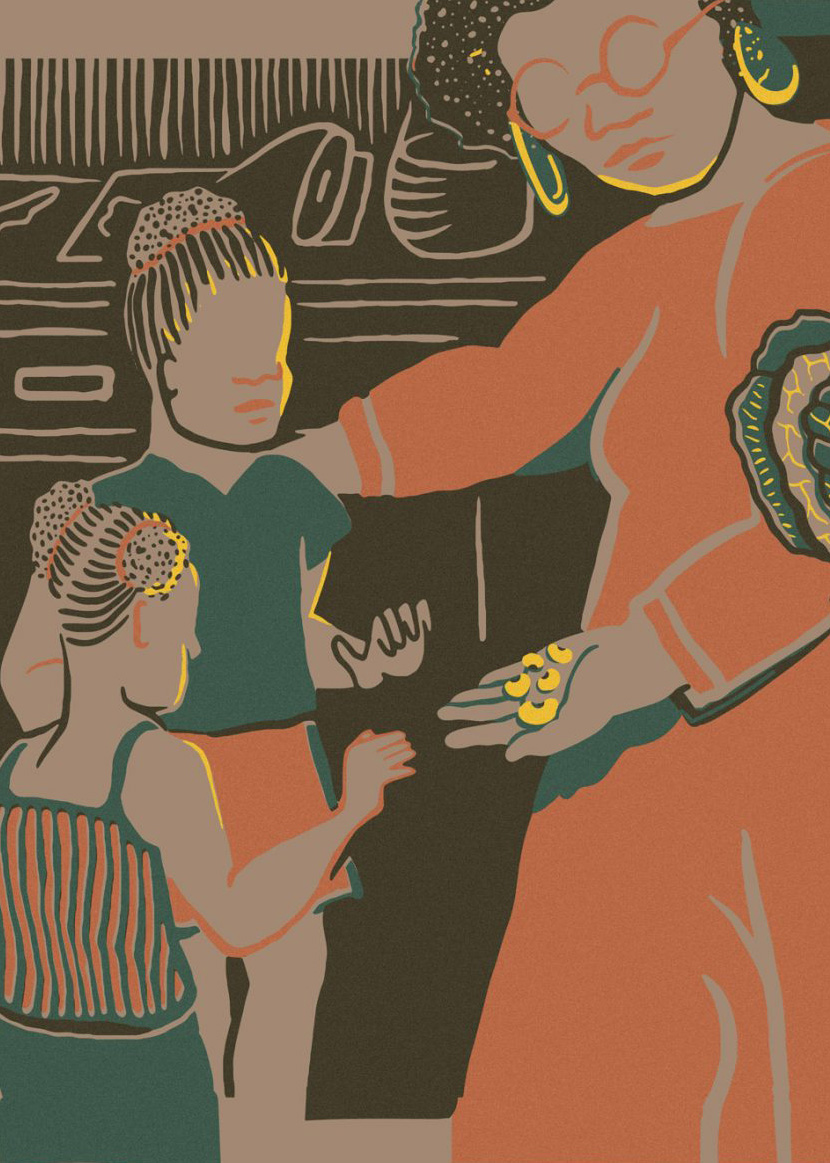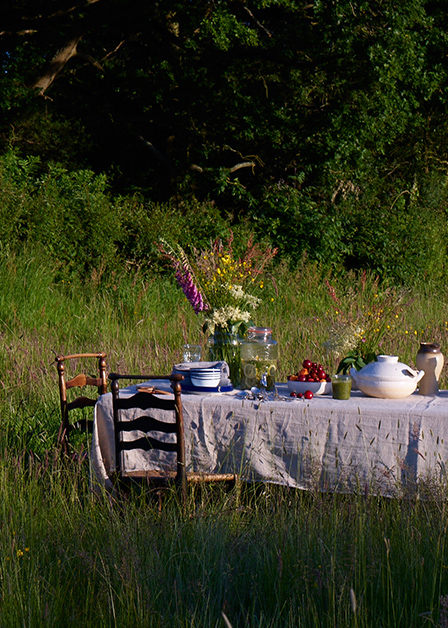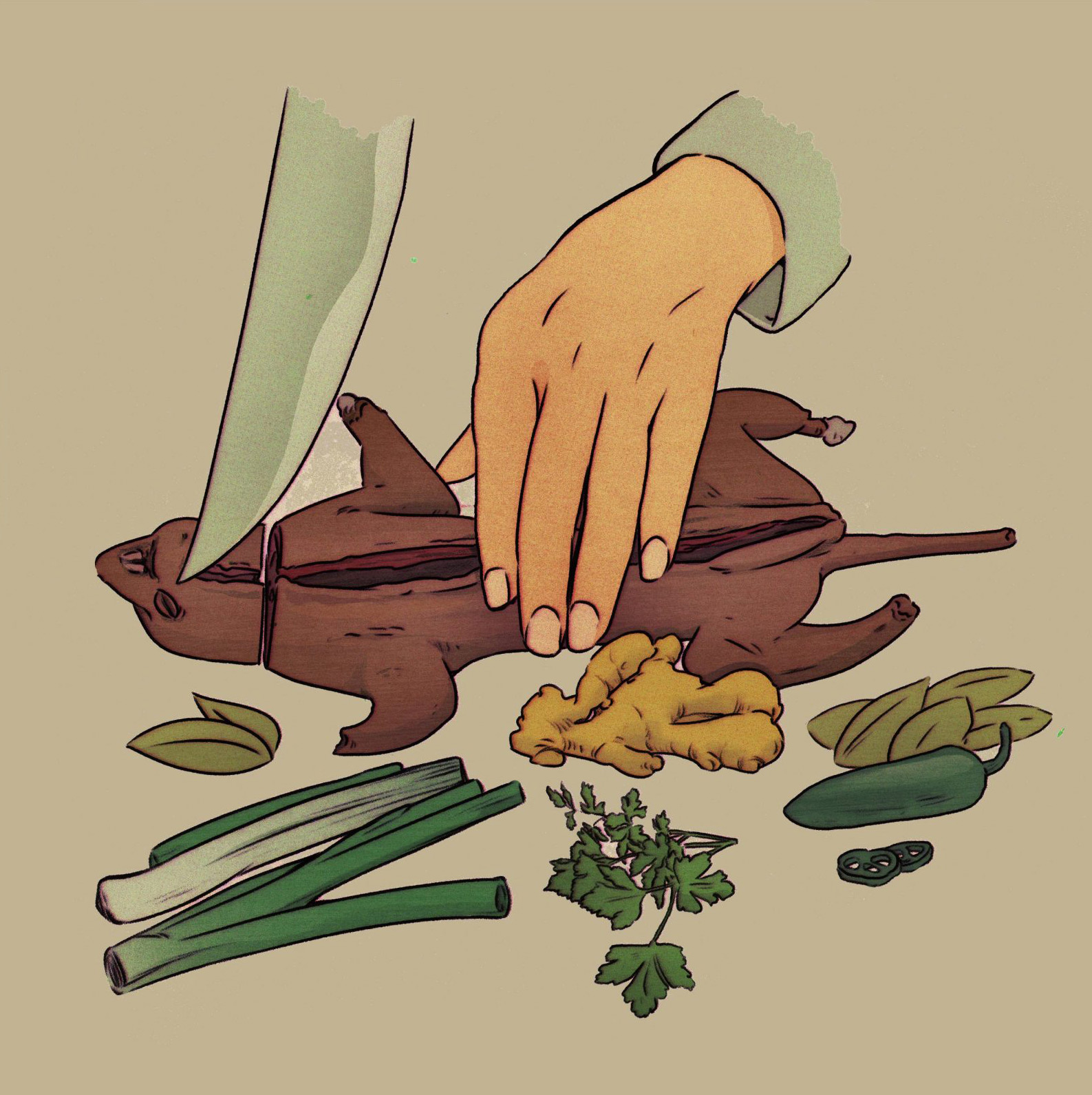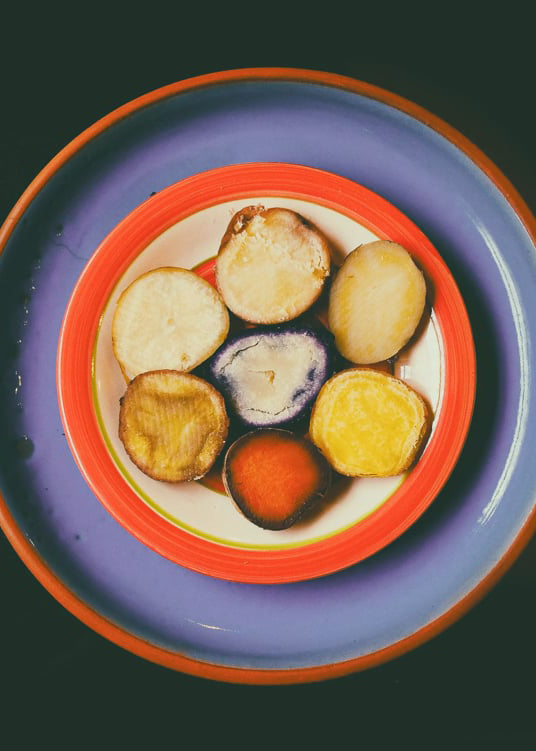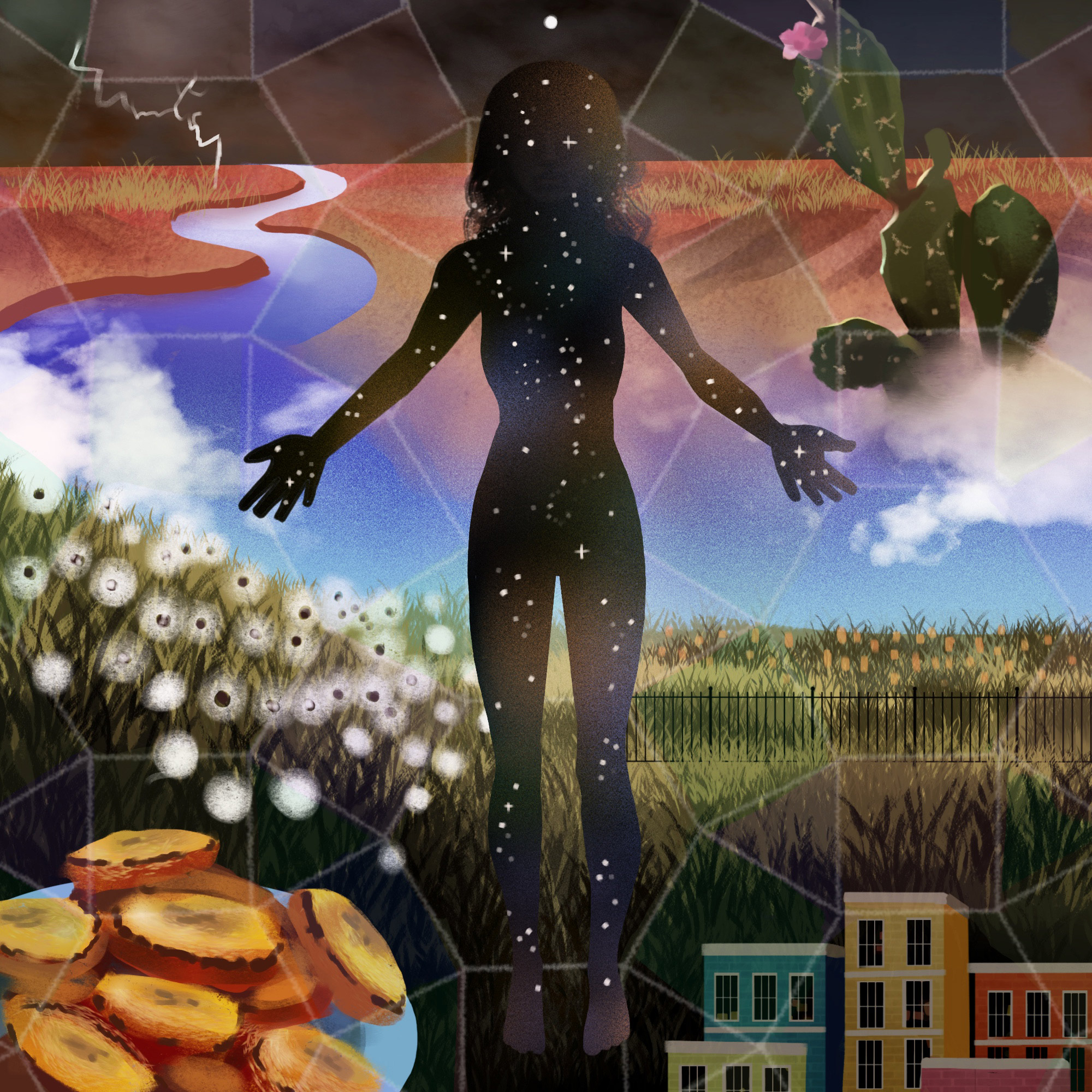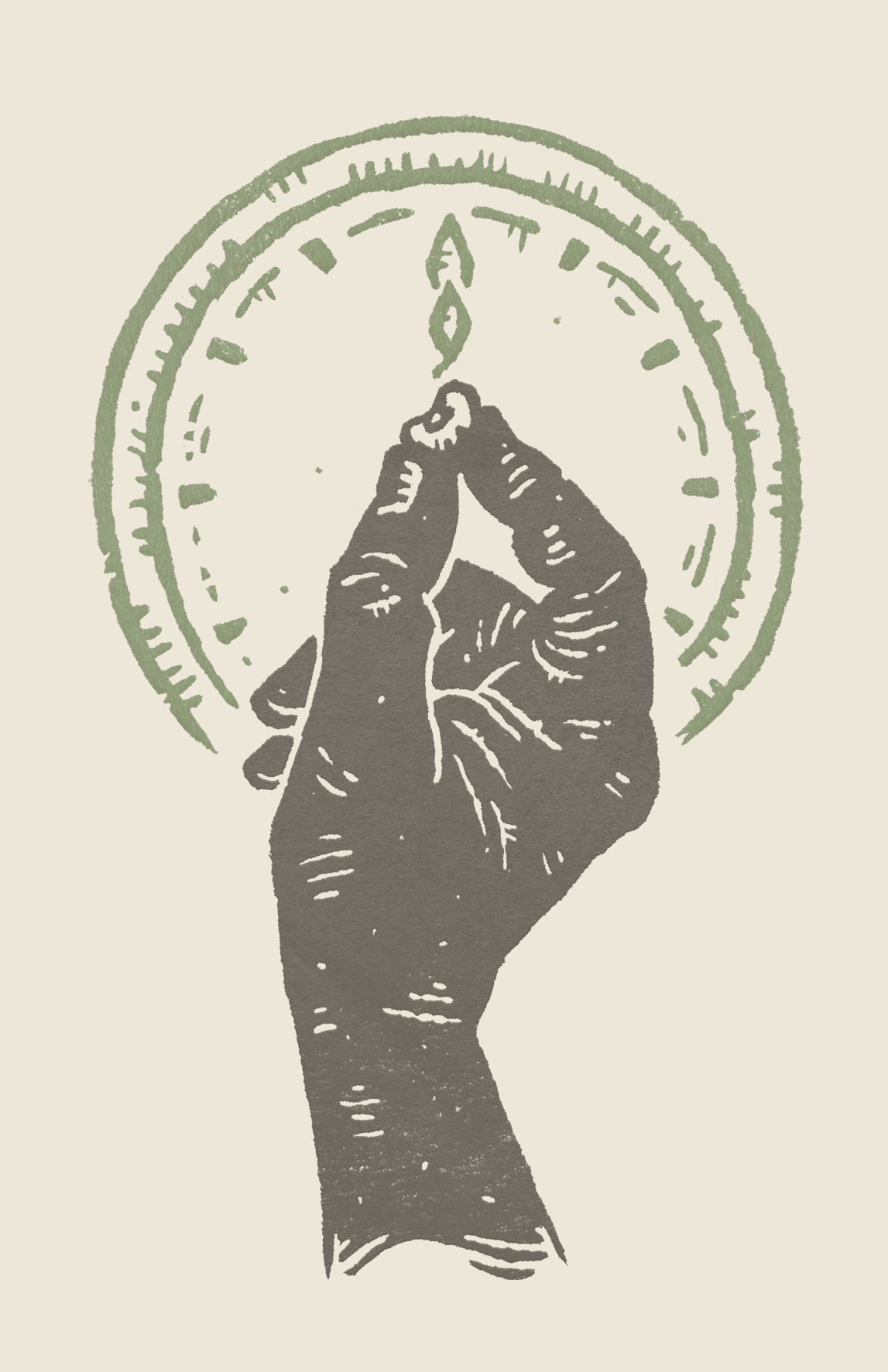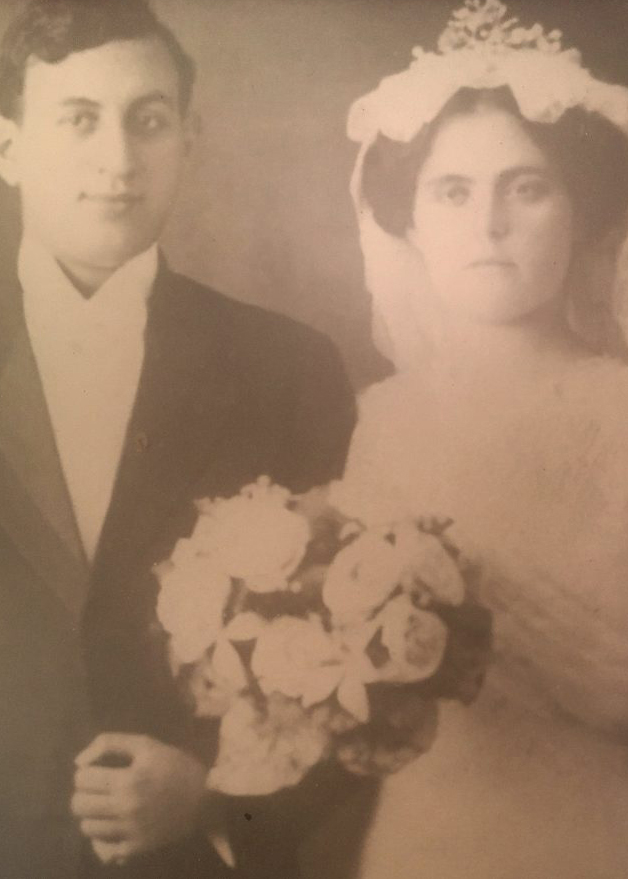
Gina Rae La Cerva is a geographer, environmental anthropologist, and the author of Feasting Wild: In Search of the Last Untamed Food. Her writing has been published in Leonardo/ISAST by MIT Press, THE Magazine, Sage Magazine, Feedback: The Open Humanities Press, The Santa Fe Reporter, and Gender and Forests: Climate Change. She holds degrees from Yale University, The University of Cambridge, and Vassar College. La Cerva is a National Science Foundation Graduate Fellow and recipient of Yale’s William R. Burch Prize.
Studio Airport, founded by Bram Broerse and Maurits Wouters, is an interdisciplinary design studio that ventures out into the cultural ether to forage for anomalies, creating work that spans art, culture, science, and ecology. In addition to Emergence Magazine, their creative partners include the Design Museum, See All This Art Magazine, Slowness, Normal Phenomena of Life, and Sapiens Magazine. They serve as master tutors at the Design Academy Eindhoven and were recognized as European Agency of the Year 2024 by the EDA.
Gina Rae La Cerva revisits her grandfather’s recipes, tracing the elements of her Sicilian heritage. Through legacies of wild food gathering and feasting, she seeks to embody the traditions that have brought her family joy and sustenance, even in times of grief, conquest, and migration.
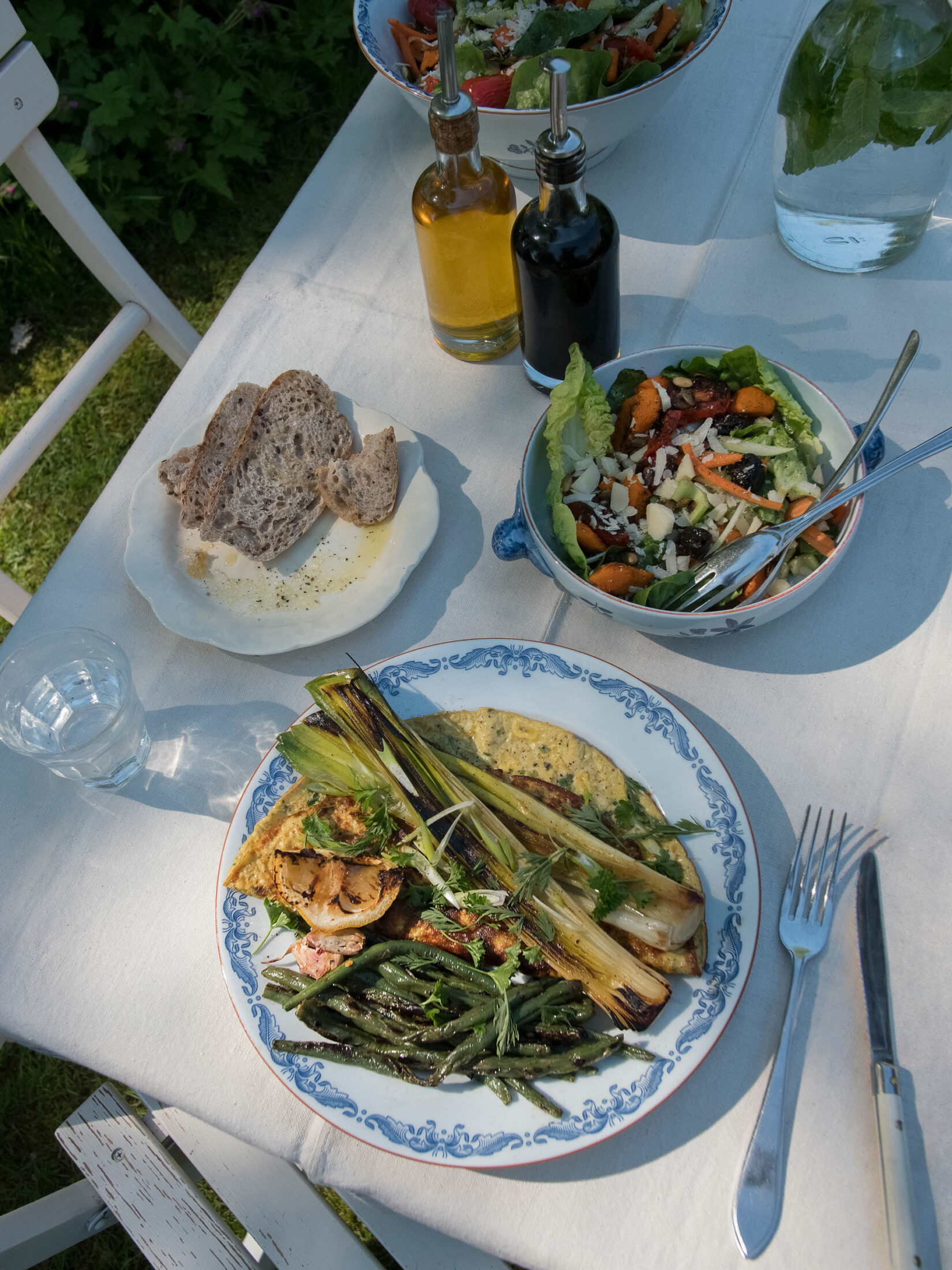
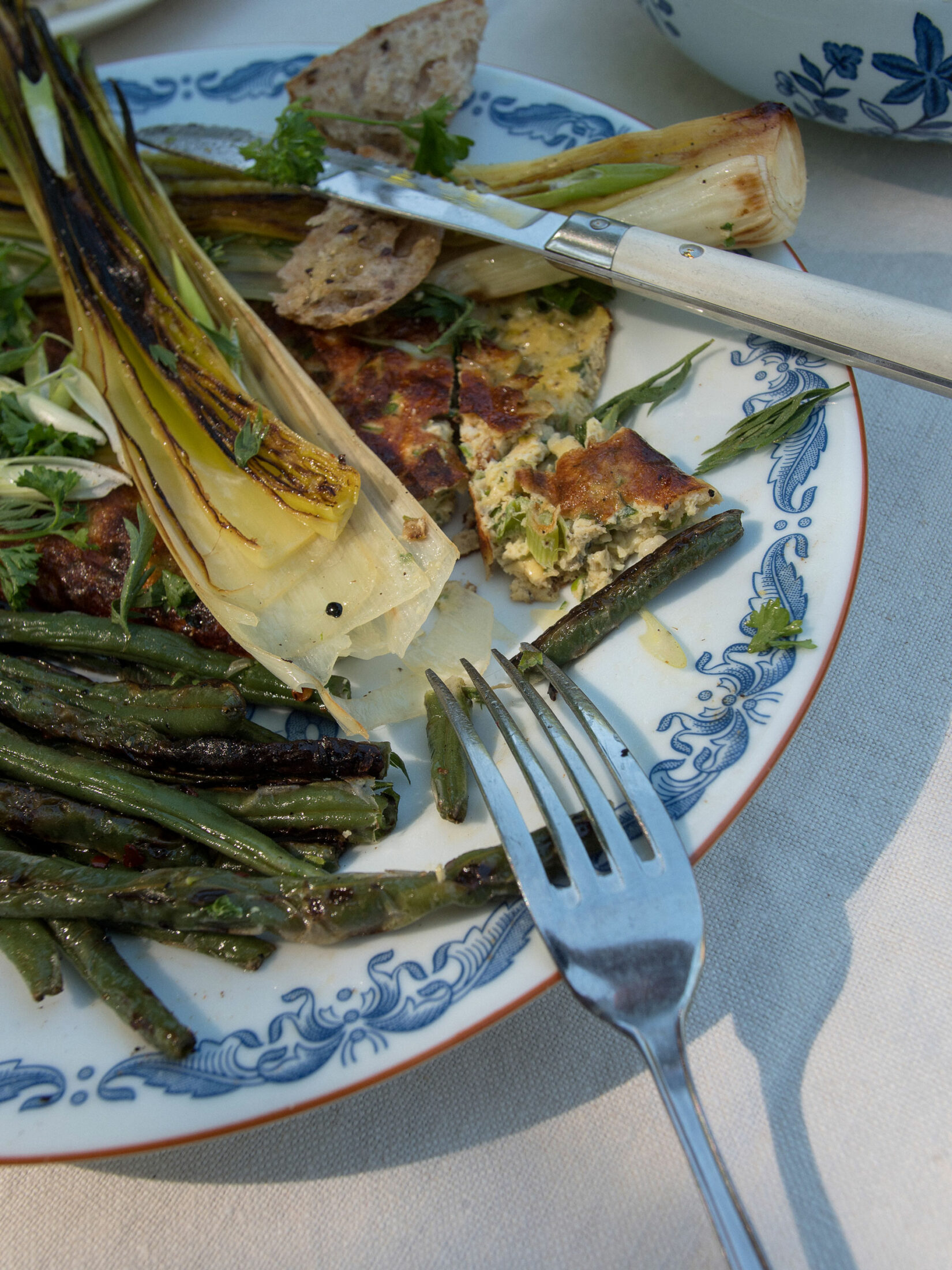
Leek omelette, string beans, Italian tossed salad (consisting of romaine, celery, carrot, tomato, black olives, roasted pumpkin seeds, sweet potato, all drizzled with extra-virgin olive oil and a touch of apple cider vinegar). Delicious!
The truth didn’t come out until after my grandpa had passed. It had been a family rumor among some of the cousins but unknown to most of us. Despite his meticulous record keeping about his own life and the boxes of memoirs he left behind, there was never any mention of it. I think he obscured the truth even from himself. On most days he was successful, even if it gnawed at the back of his neck. Even if it made him angry at times. I wonder if he ever uttered the Italian phrase acqua in bocca, which directly translates as “water in the mouth” but means “to keep a secret.”
We called my grandfather Papa.
One night toward the end of his life, I Skyped with him. Even in his nineties, he still carried the poverties of his childhood. He was the second youngest child of eight, raised in a poor Italian family in New Orleans, and had lost his mother by the age of two. I’d heard stories that Papa used to steal bananas from the docks to prevent himself from starving. One of his earliest food memories was of his grandfather taking all the kids to the French Market, where it was customary to taste ingredients before purchasing. A grape, an olive, a slice of peach, a bit of cheese, a wedge of mandarin, or a bite of watermelon. The vendors knew the family and would give a small special treat, a lagniappe, with every food sale. This gift was traditional, but because the merchants knew the children were without a mother, they were often overgenerous.
Papa’s father had been successful in the pasta machinery and macaroni production trades, then had a grocery store in the French Quarter. But when the Great Depression hit, he became a foreman in a sugar refinery and then eventually joined the family’s illegal winemaking business, which led to at least two stints in jail. When Papa was twelve, they relocated to Bushwick, Brooklyn, and the five of them lived in a four-room cold-water flat. In the kitchen there was a tub for weekly Saturday baths. It had a metal lid and was perfectly positioned between the stove and the sink, so it served as a food-prep area when not in use. The toilet was in the tenement hallway and shared by everyone on that floor. Papa’s father died shortly after the move. They mourned him by wearing black for a full year.
Despite the many childhood hardships and upheavals, Papa went on to live a life that reminded me of a James Bond character. He was a spy in World War II, spoke five languages fluently, rode a motorcycle down the California coast, taught ballroom dancing for Arthur Murray studios in New York City and Australia, and even danced on TV during a regular weekly program. Only later did I find out about the numerous nervous breakdowns he’d suffered throughout his life.
Papa loved to cook and eat. He would send frequent emails detailing where he got his ingredients, praising the local farmers, the family grocers, the German-owned bakery, even the chef at the local Chinese restaurant who had “a Bronx sense of humor.” To others, this record keeping of his life’s details in emails and memoirs might seem obsessive, but for Papa they were a genuine form of gratitude. I don’t think his childhood hunger ever fully left him.
Even a month before he died, he was still cooking himself delicious meals. “Am again sharing meals the only way I can these days,” he wrote in an email above a picture of his dinner. There was often a caption to the photo describing the ingredients, as well as any memories it evoked. In one email he reminded us of what his grandmother whispered every time she kissed him goodbye: “Sciaddu miu”—Sicilian for “my breath.” Such words of love are never an error.
He died among his memories—left the living as a man who had become his stories.
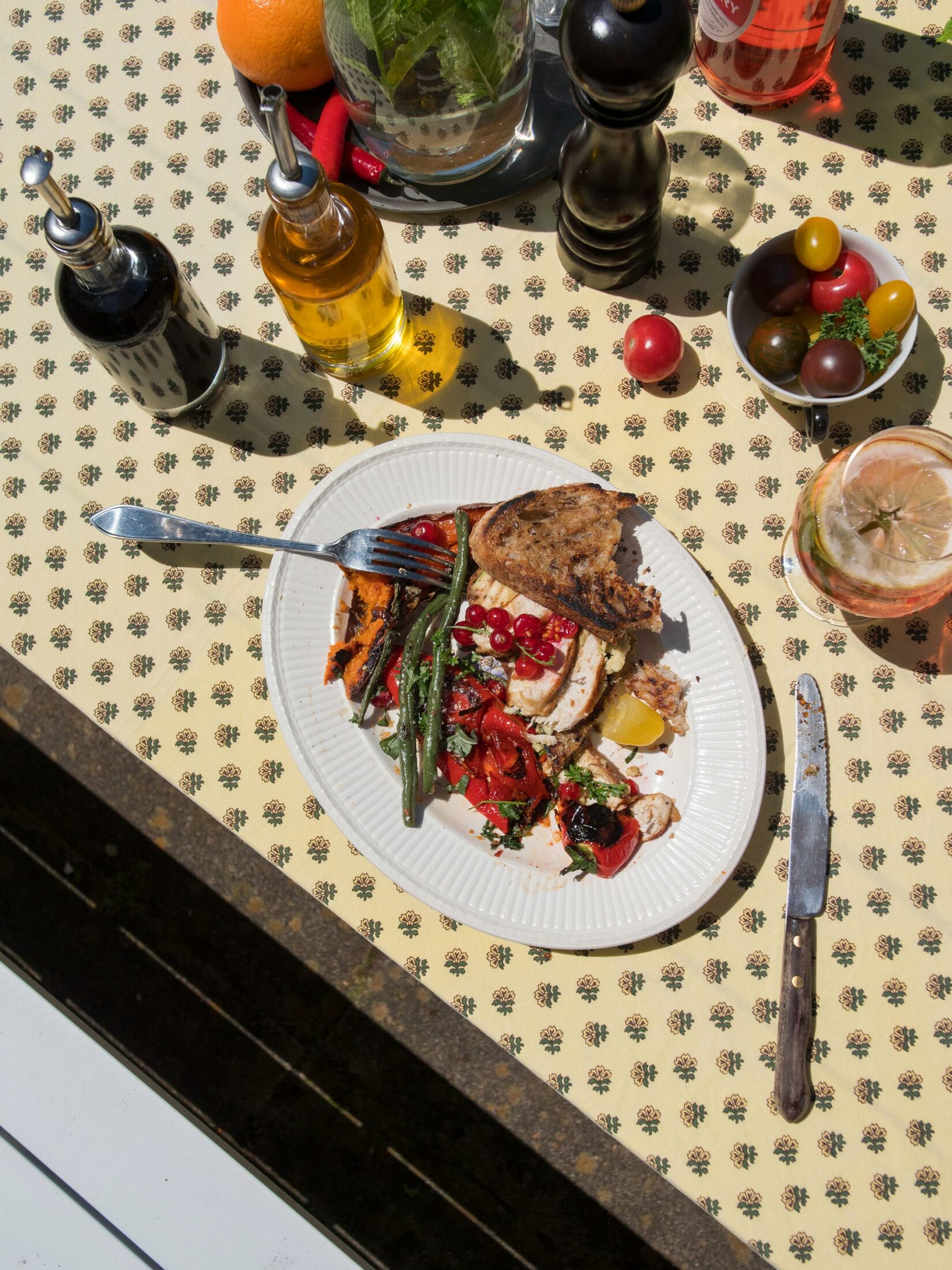

Chicken patty on twelve-grain bread, cranberries, string beans, avocado with roasted red pepper, and half a sweet potato.
If you can’t find your origins in food, you can sometimes find them in a name.
For many centuries, surnames identified people by their place, status, work, or parents. The name La Cerva translates as “of the doe.” It was of noble status in Spain and meant we had been the “keepers of the game” who managed the royal lands of King Alfonso V of Aragon. Then in 1436, the king sent Raniero de la Cierva to Sicily to help fight a war. He established residence in Palermo, and a long line of descendants have remained there ever since. There is still at least one town, somewhere, named after us.
One of my great-great-grandmothers had the last name “Sempreviva,” forever alive, which was given to her because she was a nameless foundling. She had been abandoned with her twin sister on a covenant doorstep. The twin died, but my great-great-grandmother fought to live. The nuns named her “Michelina” in honor of St. Michael, the warrior archangel.
The tradition of naming children to honor parents and parental siblings was a firm rule in our large family. “Rose” was an especially prevalent name, an abbreviated version of “Rosalia,” the patron saint of Palermo. Saint Rosalia, “the little saint,” was the deeply religious daughter of a Norman noble family in the twelfth century. In her later years, she retreated to a cave on Mount Pellegrino above the town and lived as a hermit until she died, alone, in her mid-thirties.
Almost five hundred years later, in 1624, a plague besieged Palermo. About a year into quarantine, the ghostly Saint Rosalia visited a sick woman. Then, according to legend, she appeared to a hunter. “I will show you where my bones are. You must bring them back and carry them in a procession around the city, circling it three times,” she told him. The hunter climbed up the mountain and brought back the bones he found in the cave. After the procession of her remains, the plague disappeared.
It is traditional on September 4 to solemnly walk barefoot from Palermo up to Rosalia’s cave on Mount Pellegrino. But first, in the summer, there are two days of feasting and ceremony in celebration. Pasta with wild fennel, sardines, pine nuts, and raisins. Little snails steamed with parsley and garlic. Boiled octopus and mussels. Pickled lupini beans, corn on the cob in their husks. Fincione, bread dough covered with onions, tomato sauce, anchovies, oregano, bread crumbs, and caciocavallo cheese. Snacks of pumpkin seeds, chickpeas, fava beans, and almonds—all roasted and lightly salted. Mountains of watermelons and prickly pear fruit on ice. Nougat with sesame seed; bomboloni, Sicilian doughnuts; and iris, fried dough stuffed with ricotta cream.
Sicily’s culinary culture is based on migration and conquest. For millennia, the island lay at a global crossroads, which meant that its cuisine relied heavily on ingredients and flavor pairings brought from elsewhere. Saffron, capers, pistachios, and agrodolce sauce—a sweet, sticky, sour sauce made by reducing honey or sugar with vinegar and sometimes adding spicy fruits, herbs, or scallions.
The first arrivals after the volcanic island rose out of the sea were the indigenous Sicani, Elymians, and Sicels. Then came the Phoenicians (from what is now called Lebanon), followed by more people from Carthage (what is now called Tunisia), who themselves had mixed with a few North African Berbers. These invaders were followed by the Greeks and Romans. The Jews came next, not as invaders but as migrants, although no one is sure exactly when they arrived, as they did not announce themselves as loudly as those on a colonizing mission. They were followed by the Muslims who overthrew the Byzantine rulers, only to be challenged by the Berbers they’d once fought alongside. At some point even the Vikings arrived, along with the Vandals and the Ostrogoths (Germanic tribes). There were invasions of Normans, Swabians, the Angevins of France, the Aragonese, and the Austrians—and finally, those migrants who could simply be called mainland Italians.
I think of all those bodies full of bacteria, and their genetic recipes migrating from one person to the next. Across the country. The world. Across generations and time. My carnagione, my skin tone, darkens deeply with the summer sun. My wavy hair finds its curl in humid places. I inherited these traits from some Sicilian ancestor, lost to history but alive in my story today.
My family once owned a mountain home near Monreale. Perhaps it was on a clifftop overlooking the sea. Was it there that my great-great-grandmother first learned to make granita? This granulated sherbet was brought to the island by the Arab cultures and was popular among the Sicilian merchant class. The snow on volcanic Mount Etna was harvested, stored in stone grottoes, and then flavored with syrups made from rosewater, elderberry, lemon juice, or jasmine blossoms (these heavenly scented flowers were also brought by the Arabs). My great-great-grandmother took the granita tradition to New Orleans when she emigrated there in 1907. She used shaved ice, which was as close to snow as possible, and added fruit juices, herbs, or liquors. Her favorite flavoring was Coca-Cola, to which she was addicted, since it contained some cocaine in those days.
Although she was illiterate, my great-great-grandmother sure could talk. She spoke in Sicilian and broken English, usually a mix of both. I imagine she cast many protection spells, praying to the saints and laughing with the sinners, depending on the kind of help she needed. But it was through food that she spoke most eloquently. She blessed her family with every meal set down upon the table.
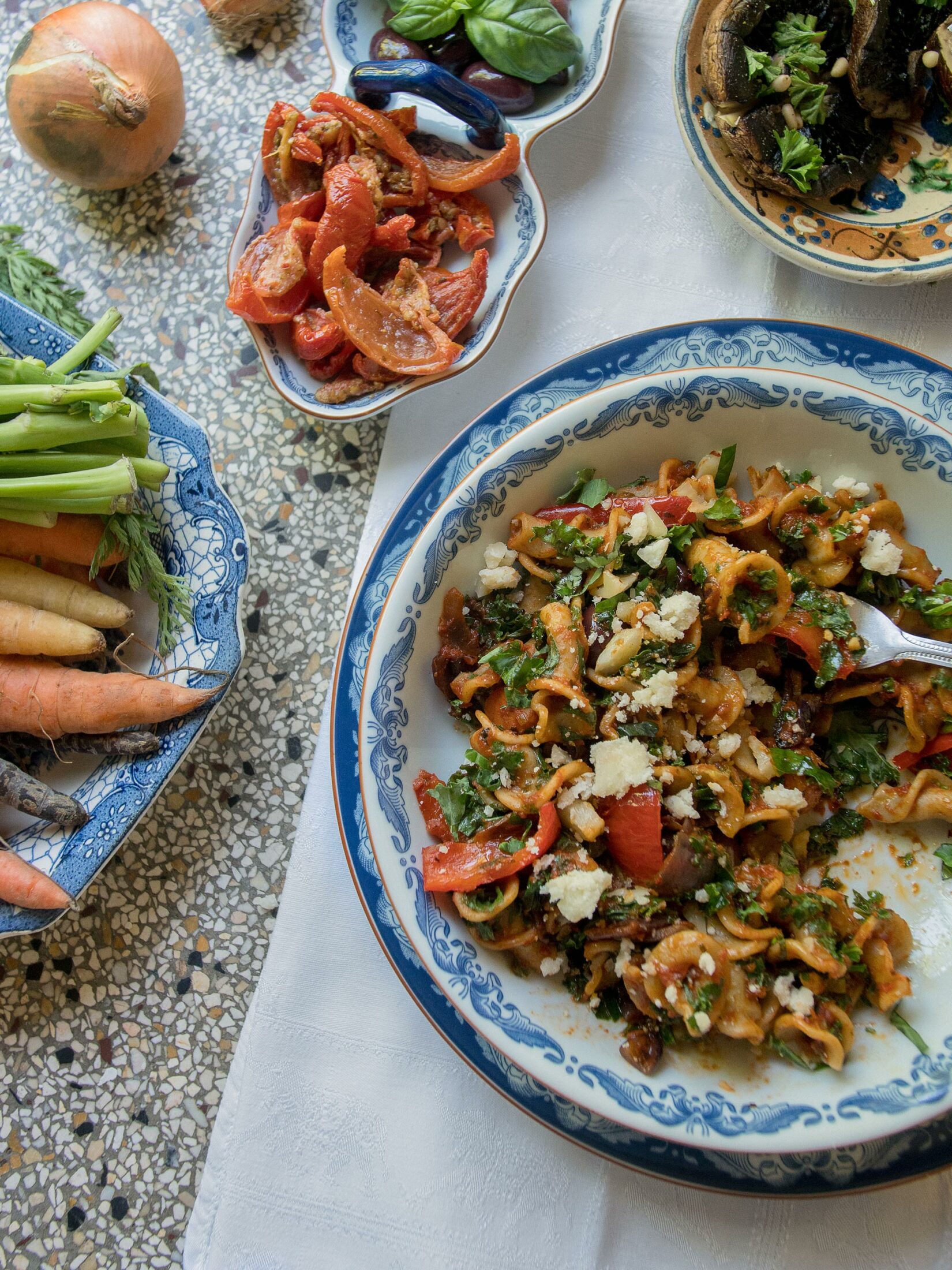
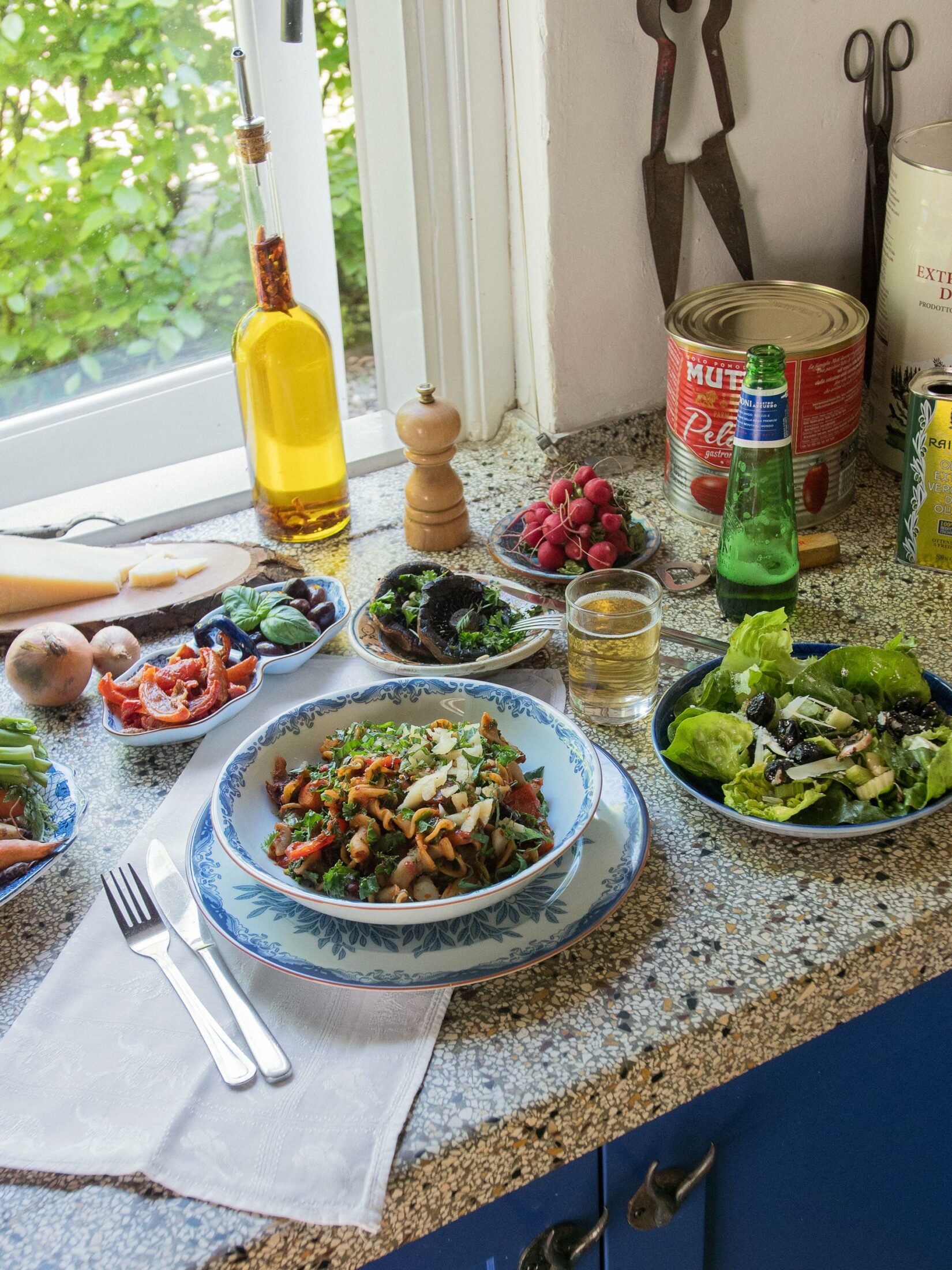
Whole wheat pasta with kale cacciatore sauce, accompanied by a side salad.
“So weird to be living through the end times,” I half-jokingly said to my oldest friend the other night after we had been discussing the impending collapse of some vital global system, like the Amazon, or the Great Barrier Reef, or the Arctic. Or how we’d just hit 500,000 dead in the United States from COVID.
“It’s always been the end-times,” he replied.
“Truly. Imagine living through the Plague in the Middle Ages,” I said. “It killed more than a quarter of Europe’s population.”
I’ve known this friend since before we were born, when we were both in our mothers’ wombs. I like to think we said hello through the ether at some prenatal yoga class or birthing group potluck. It was the early ’80s, and Santa Fe was full of coastal hippies—Jews and Italians from Brooklyn and Westchester, Santa Barbara and San Francisco—who came to the desert, following one whim or another: a cult, a woman, a landscape. They sought a sense of freedom, outside the acculturation of the places where they had been raised. They migrated to new landscapes to see how they might adapt—from wet forests to dry deserts. They became creatures of the sun, leaving their damp shadows behind.
In nature, migration is a universal and general adaptation. In periods of sudden change—such as a fire, a flood, or famine—migration allows mobile species to escape the immediate danger and inhabit new areas. Other creatures, like birds and caribou, and even some humans, such as the Florida retiree, migrate with the rhythms of the seasons. These regular movements define their lives. They live in a constant dance, adapting daily to the weather, the food, the feeling of the morning.
Over the millennia, these seasonal migrations have shifted in location and timing, due in part to climate change and evolutions, but the form has remained the same. Migration is a feature of life that is so ordinary, so at home with the changeability of the world, it is impossible to imagine our planet without it.
There are many plants in Northern New Mexico, where I live, that feel deeply familiar to my heritage. There is a long history of Sicilians gathering wild plants—borage, chicory, fennel, endive, and purslane—for salads, stews, or spiritual comfort. Bundles of wild rosemary were burned to ward off the evil eye. Chile peppers migrated around the world and back again, eventually becoming a necessary ingredient in both Italian and New Mexican cuisine.
In Sicilian food, pine nuts from the stone pine tree are common, often paired with raisins and some sort of salty fish. New Mexico has a related species—the piñon pine. Last fall I gathered nuts from the squat trees that dot the hills above town. They were luscious, buttery, and sweet. These tiny morsels sustained the Indigenous people of this region, the Tewa and Tano, for many lifetimes. They ate them raw, ground into a flour or a butter, and used them in soups. Harvesting and eating piñon nuts remains an important social and ceremonial tradition in the fall. This delicacy sustains the squirrels, birds, and rodents too.
They were part of my childhood as well, a way to connect to the land where I lived. I couldn’t believe the earth could gift such sustenance. Today, these nuts feel so precious. The piñon trees mast and offer their bounty only once every three to five years. The future of these trees is uncertain. Many are already dying back because of climate change. As I gather, my hands sticky with sap, I am full of gratitude, guilt, and a gnawing grief.
Other plants, like grapes, were brought here during Spanish colonialism. Franciscan monks followed the conquistadors to bring Christianity to the Indigenous people. They were required to buy their sacramental wine directly from Spain, as it was illegal to grow Spanish grapes outside the country. But around 1629, some bold monks smuggled vines into New Mexico. The variety was known as “mission grapes.” In 1868, Italian Jesuit priests settled in New Mexico and brought their winemaking techniques to the region. In less than twenty years, New Mexico was producing almost a million gallons of wine annually.
Some plants made the reverse trip. In Sicily, opuntia cacti commonly known as prickly pear, were first brought to the island by the Spanish, who took them from the Americas during the colonial period. It was fashionable at the time for the Sicilian upper class to have extensive gardens filled with rare and exotic plants. The prickly pear was bred to bloom twice a year, which doubled the fruiting season of these tasty treats. In a procedure known as scozzolatura, a practice that continues to this day, the first cactus flowers in late spring are cut off and the fruits that result, the bastardoni, are the most highly prized because they are bigger and juicier. At some point, a few cacti escaped the confines of the aristocratic gardens and made a home on the windswept hillsides. Clusters of green pads studded with bright magenta fruits now grow freely over much of the island. Plant migrants assisted by human desire.
When I was a kid, the fruits reminded me of gemstones. Such a deep juicy color in a land of tawny browns. I still love gathering them today. I can never manage to wait until I get home and clean them before eating one or two, so I associate them with the sensation of having hairlike, splintery needles in my lips. Somewhere down the lines of the past, my noble ancestors lived in a huge palazzo, a long, rectangular mansion with an interior courtyard. I imagine it overflowing with opuntia so genteel that it’s climbed up the sides of the stone walls to mingle with the fuchsia bougainvillea.
Sicilians love feast days and celebrations. Perhaps because their history is one of such upheaval, it is ever more vital to make time for joy and sustenance. The volcano at the heart of Sicily, Mount Etna, is both a continual threat to the island’s existence and the means by which it has grown. In 1669, an eruption began that lasted 122 days—explosive outbursts from flank and central vents, molten rocks flung miles into the air, lava flows overtopping city walls, plumes of ash settled over life in suffocating layers. The lava flows remained hot enough to boil water for many months; it reportedly took eight years for them to cool completely.
The pleasure of food allows us to feel the abundance of being alive in this ever-dying world.
To live so close to a volcano—this is to know the meaning of the Italian phrase, meno male, which is a way of thanking God; because truly it could always have been worse.
When I gather wild foods in New Mexico, I connect not only to these roots but also to the history of conquests and migrations and disaster and feasting on this land. I wonder how long this place will be habitable. The drought here is worsening. Millions of years ago much of it was under a shallow sea. You can still find fossilized shells in the rocks. How will it change in the next hundred years, as climate chaos forces all things—animal and plant, human and nonhuman—to move and find new ways to thrive?
Migration might not save us this time. Of all the species that have ever existed, 99.9 percent have gone extinct. It’s likely not a question of if humans will disappear but when. Some extinctions are quick: species survive a few millennia before their particular branch of the tree of life terminates. Other extinctions are so quiet they seem like something else—an evolution from one thing to another.
On the scale of millennia—the age of the rocks beneath our feet—humans have been a tiny blip. And yet our devouring activities have been so frenzied that our existence will be seen in the archaeological record as a thin layer of devastation, as though an asteroid had hit. We’ve changed the earth so fast and so extensively, in such a short amount of time, that we’ve become the most dominant natural force on the planet. We’ve burned it all up. Is there any use in arguing over whether it’s capitalism or the fossil fuel companies, or the eight billion people, or the rich, the patriarchy, the aliens, or the devil causing all our problems? We’ve been on this path to extinction a long time.
The pleasure of food allows us to feel the abundance of being alive in this ever-dying world. It allows us to look outside of the memories we faithfully reconstruct in order to keep the world static, beyond our desire to be remembered as individuals. Each recipe has its own life history: a shift in relationships between people, place, and plants; upheavals of what was known and had to be relearned; reconfigurations of what it means to feel at home. It is a migration of our perceptions from one landscape to another. It is a story of the senses.
Feasting allows the loneliness and terror of existence to be forgotten, at least momentarily. Such pleasure brings us into that raw, mad, deep love of life. How easily we leave behind our stories of movement and desperation—of making a new home in a foreign land—when our stomachs are full. How many generations thought, “Well, surely this must be the end of the world? Might as well eat!”
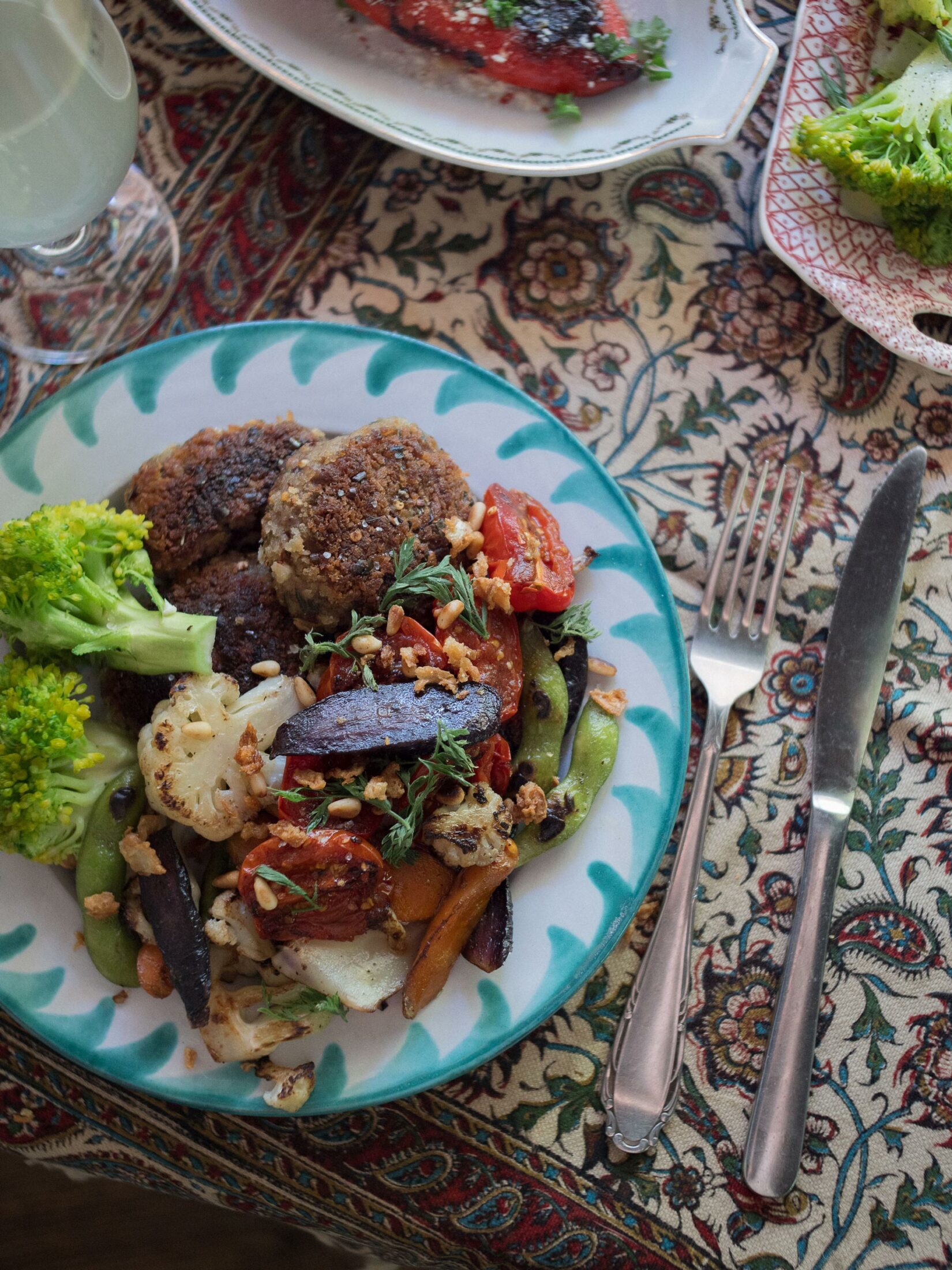
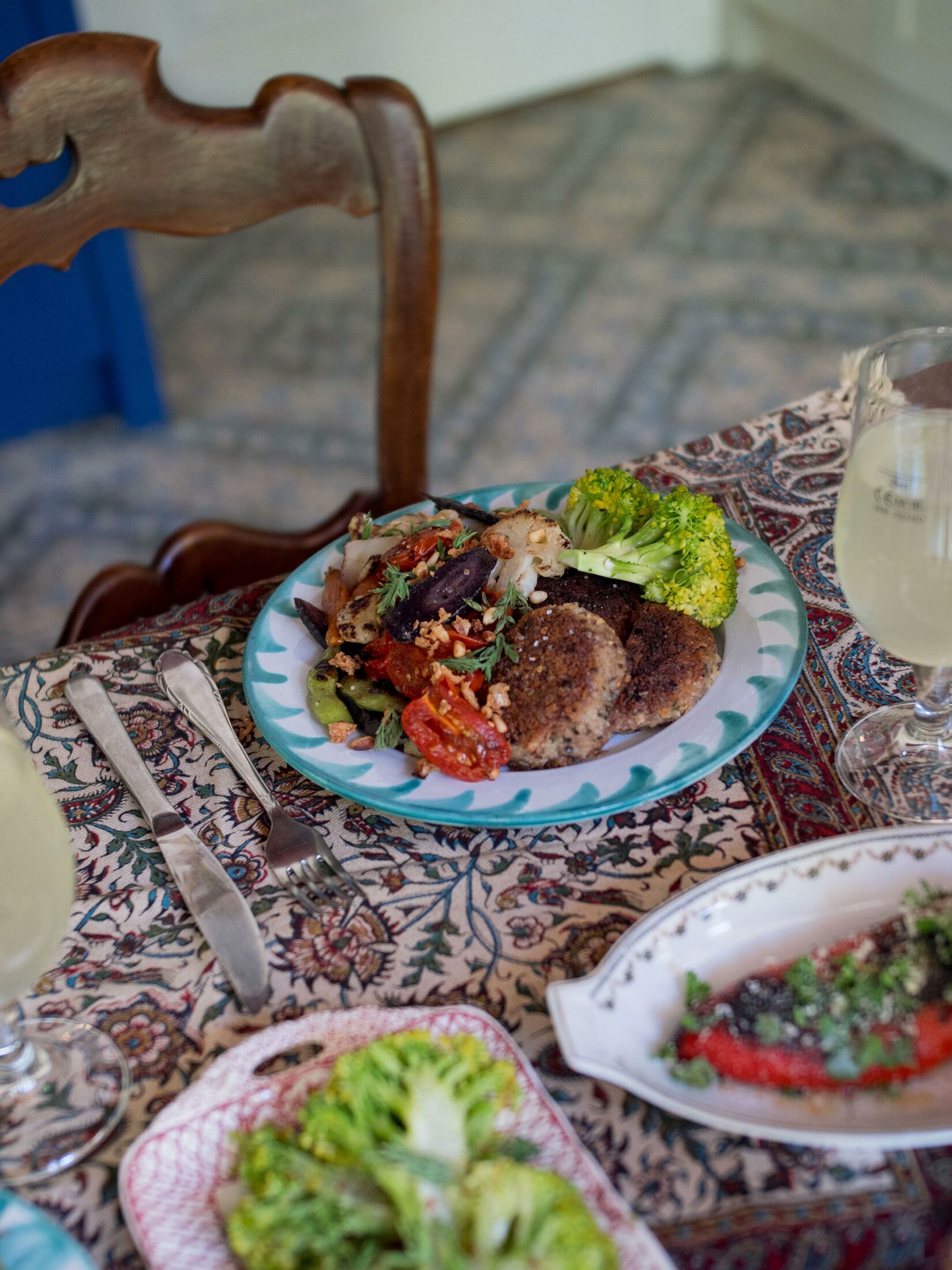
Breaded ground pork cutlet with plum tomato. Steamed broccoli, EVOO butter beans with dried onion flakes and garlic-pepper-salt; stir-fried edamame, cauliflower, and carrots.
Adjust and adapt. That was his adage. His prayer. His affirmation.
As a resident of coastal Florida, Papa experienced a number of hurricanes. He once sent us a photo of himself in the bathtub with a colander on his head in preparation for an impending storm, a sly grin on his face that made me wonder if this was a game or a genuine precaution.
In some ways, Papa would have excelled in this time of pandemic and quarantine. Adjust and adapt. He always kept a full pantry, fridge, and freezer. He had an “eat-soon shelf” so that he would not let food go to waste, and since he already ate most of his meals alone, he had a reserve of leftover portions in the freezer.
In other ways, Papa would have hated this forced solitary retreat. Most of his socializing took place in small moments with strangers—the Vietnamese man who cut his toenails at the mall, the women who took the tickets at the movie theater. He used to keep boxes of cookies in his car so that he could give them to the service workers he encountered.
This time of isolation would have stolen those little, important joys from his life. He wanted to feed everyone, to bring some cheer to those he encountered. Perhaps it was a relic of childhood. Maybe such rituals reminded him of the fig-and-date cookies, called cuccidati, that his big Italian family made for Christmas. Or the tradition on the feast day of Saint Joseph, in which Italian households in New Orleans set out elaborate altars to feed the poor.
I wonder if he ever truly adapted to an adulthood of solitary meals after a childhood of noisy family feasts. Family reunions were like dinner-dances, attended by hundreds of relatives. He recalled that at one such birthday celebration, before the troubled times, all the mothers and grandmothers, aunts and godmothers, helped to cook. They scoured washtubs and placed them atop charcoal braziers to serve tomato-sauced pasta crowded with meatballs and Italian sausages. Another tub overflowed with a Sicilian mixed salad. The one next to it was filled with ice and fresh oysters. The uncles helped shuck, topping each one with a squeeze of lemon juice or splash of hot Tabasco. There were mounds of bread and biscotti and candied almonds. For dessert, cannoli and sfogliatelle surrounded the centerpiece: a huge cassata cake—a delicious marriage of sponge-cake layers, ice cream, and ricotta, flavored with chopped semisweet chocolate, lots of candied citron and orange peel, glacé cherries, and blanched pistachio nuts. It was enough food to satisfy the many family, friends, and neighbors, with leftovers to bring down the driveway to feed “the ever-present poor.”
Papa grew up in direct contact with the vendors and farmers and fishermen who provided his sustenance. Food was medicine to him, and every day of good health was a blessing. In his old age, the sad, familiar question When will I eat again? no longer tore at him. When he shopped, money was no longer a worry. He marveled at the abundance, at times overwhelmed by such a variety of choices. Occasionally, he would offer to pay for the groceries of someone in line ahead of him, especially if he saw they were putting something back or struggling to find enough money.
He wrote to me that while he cooked, he often wondered: “Who planted, cultivated, harvested, packaged, and shipped these ingredients to my market? How many strangers helped get this all from wherever it started to my condo kitchen and dining table? My appreciation and gratitude should be expressed to each of them! It saddens me that I can thank only God and the market workers, but I never get too sad to lose my appetite … or my abundant weight!”
In the last years of his life, he emailed photos of his meals to us, almost daily, as if a prayer that we should eat well too. Separate but together. I wish I had cared enough when he was still alive to understand his loneliness. Despite his many friends and connections with strangers, feeling lonely was a consistent theme that ran throughout his memoirs. It seems to me that, as humans, we were never meant to eat alone. I have eaten most meals alone during this pandemic, and I understand now how it is both easier and harder to be so solitary.
Papa wrapped himself up in his traumas, and that made it harder to reach him. He was so critical. It was impossible to ask him questions, for doing so would derail his story, which had to be told in his right way. He needed to be the center of attention. He was desperate to be remembered. He was a man who urgently wanted to share himself with the world but was never quite sure how. His mouth was full of secrets.
I’ve tried to make it a practice this year, when I sit down to a meal alone, to imagine all the people and creatures who’ve had a hand in the food I am eating, to think of the magic and great miracle of life up close. It makes me feel a little bit less lonely. It helps to quiet my rage.
Faith. Hope. Charity. These were the words, linked together, that gave my grandfather happiness throughout his long and blessed life. They gave him happiness for nearly ninety-one bittersweet years. He adjusted, adapted, and laughed through every crisis. Sharing the gift of food in whatever way he could.
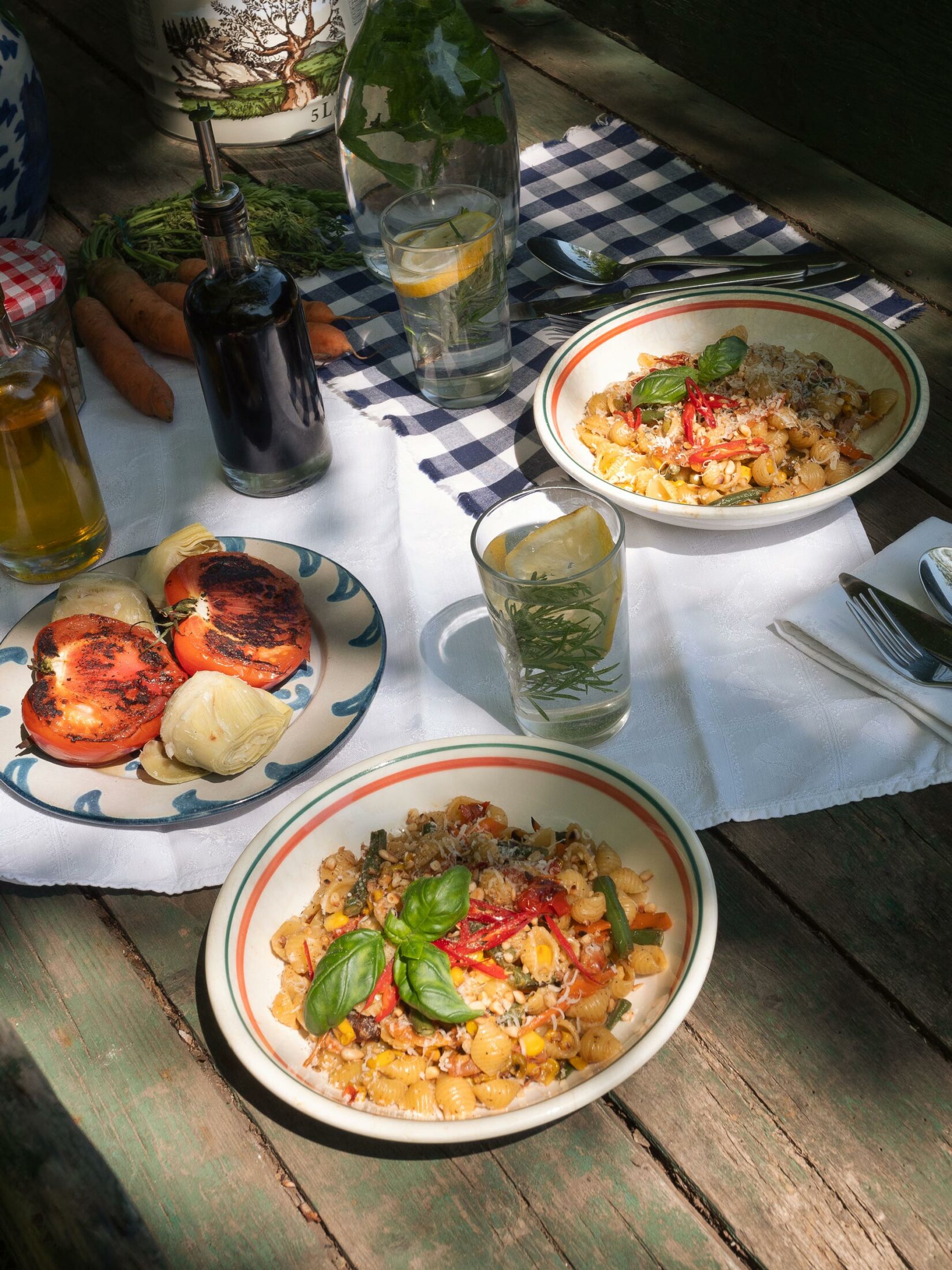
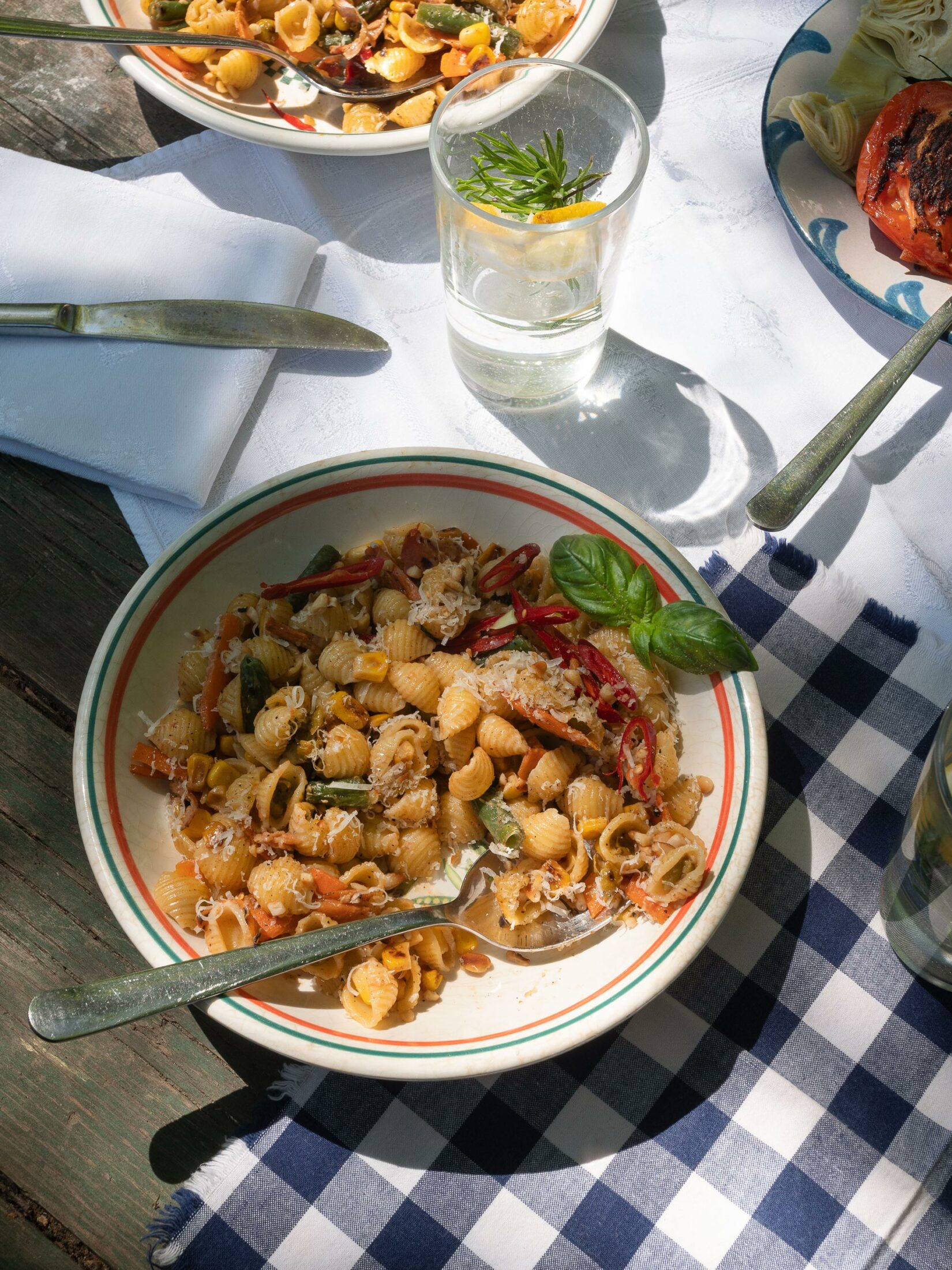
Ditalini with extra-virgin olive oil sauté of peas, carrots, kernel corn, green beans, plum tomatoes, and ham.
The thing I am craving most in this period of isolation is dinner parties. I adore dinner parties. I love to feed people. And because I tend to be an outgoing introvert, I find escaping to the kitchen mid-meal to finish preparing the next course provides a moment of respite. I gather myself over the elk ragù, then pop into the dining room with a steaming bowl of new flavors.
Sicilian food is a hybrid cuisine that celebrates whatever ingredients you have on hand or can be gathered from the hills and plucked from the water. Papa used to say that no true Italian’s garden is complete without tomatoes, figs, lemons, and cucuzza squash, “as sweet as it can be long.” He loved red beans from birth. He ate them with rice on Mondays, cooked with the ham bone from Sunday’s dinner, which is still a tradition in New Orleans. In Brooklyn, he ate them in pasta fazool. In adulthood, he would add ham, but only when he could afford the meat. In his Florida retirement, ditalini was a favorite pasta cut. “Like many other Italian favorites, including pizza and polenta,” he wrote me, “this one started as a peasant dish, being composed of inexpensive ingredients.” His food was a reflection of his own migration, from one landscape to another, adjusting and adapting to the new layers of himself that were revealed by foreign lands.
When the world opens up again, I will throw a dinner party in honor of my ancestors and the foods they ate, the rise and fall of their successes, the mark of survival in their recipes. We will sit outside under the lace vine, with the scent of apricots and woodsmoke in the air, bouquets of wildflowers, poppies, lupines, lilacs, and irises spilling down the center of the table. It will be set with painted porcelain plates and mismatched crystal goblets, which I’ve collected from thrift stores, yard sales, and free boxes over the years. There will be candles in the nooks of the adobe walls that encircle the yard. Here we shall eat together. A family. Migrants in a new land. Refugees from the calamities of tragedy all around us.
I will cook:
Pinto beans and red chile rice.
Ravioli with prickly pear, piñon nuts, and freshly made ricotta.
Anise bread baked in an horno, an outdoor mud-beehive oven, like the old Italian furnos.
A goat roasted underground, spiced with green chiles and garlic, served with a rose-hip wine sauce.
Roasted wild duck stuffed with dandelion greens, to mimic the Sicilian quail stuffed with chicory. Roasted rabbit with wild raspberries instead of pomegranates. River trout, filled with mint and the wild oregano that grows from the cracks between my flagstone patio, then steamed on a bed of salted pine tips to recall the taste of the sea.
And for dessert, rosewater custard and honeysuckle granita topped with elderberry flower syrup.
Our thirst will be quenched by wild amaro, an herbal liquor made from local desert grapes and infused with drought-tolerant plants.
These recipes are transformed by time and space. A tradition migrating from place to person, from person to place. These recipes are a life story. They are secrets in the mouth.
Before we sit down to feast, I will raise a glass and speak the toast I heard throughout my childhood: Per cento anni. “For a hundred years may you live your bliss.”
Here’s to the joy of eating in the company of others. Such joy will come again soon. I am writing it into existence. Magari—may it be so.
